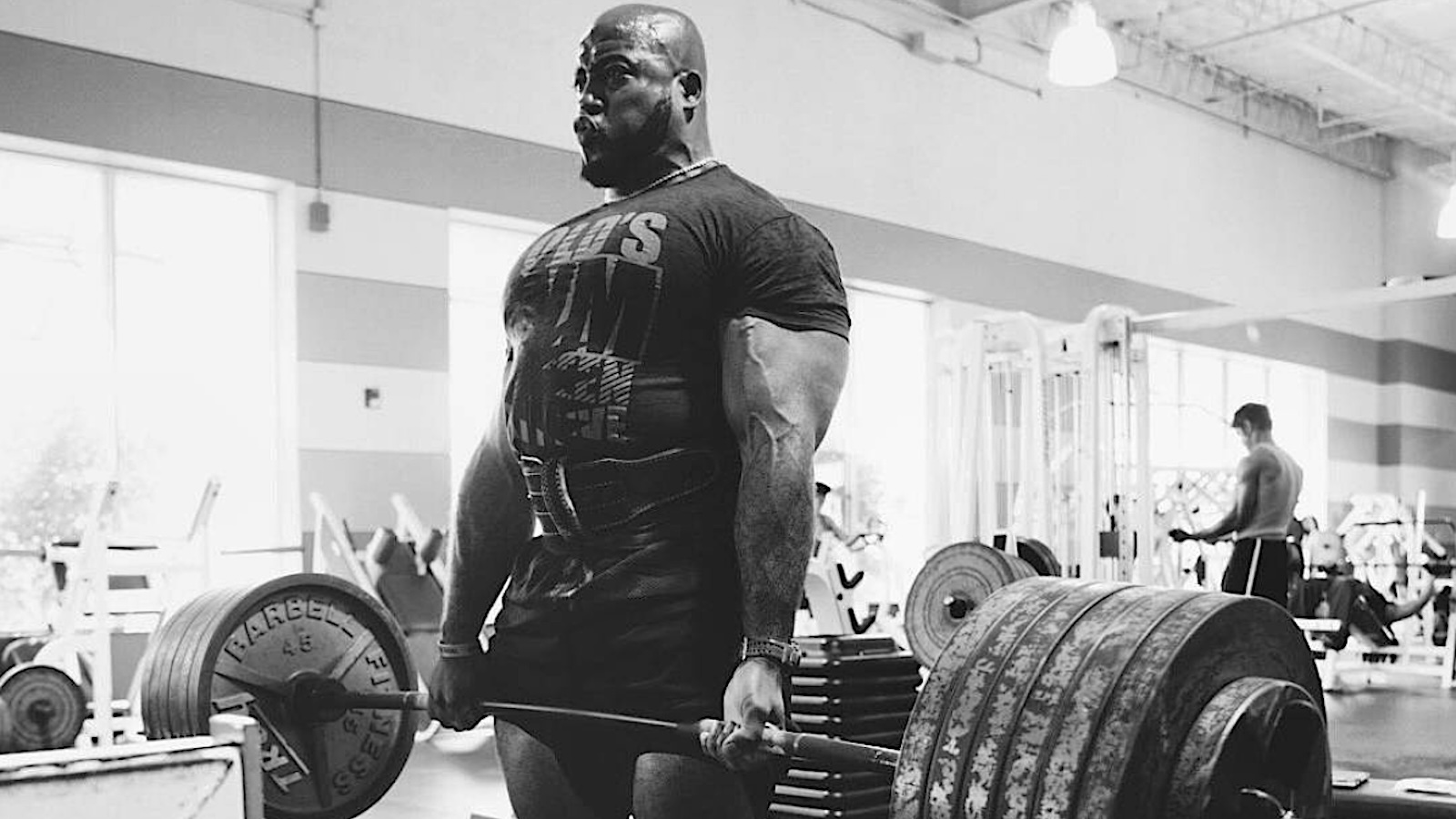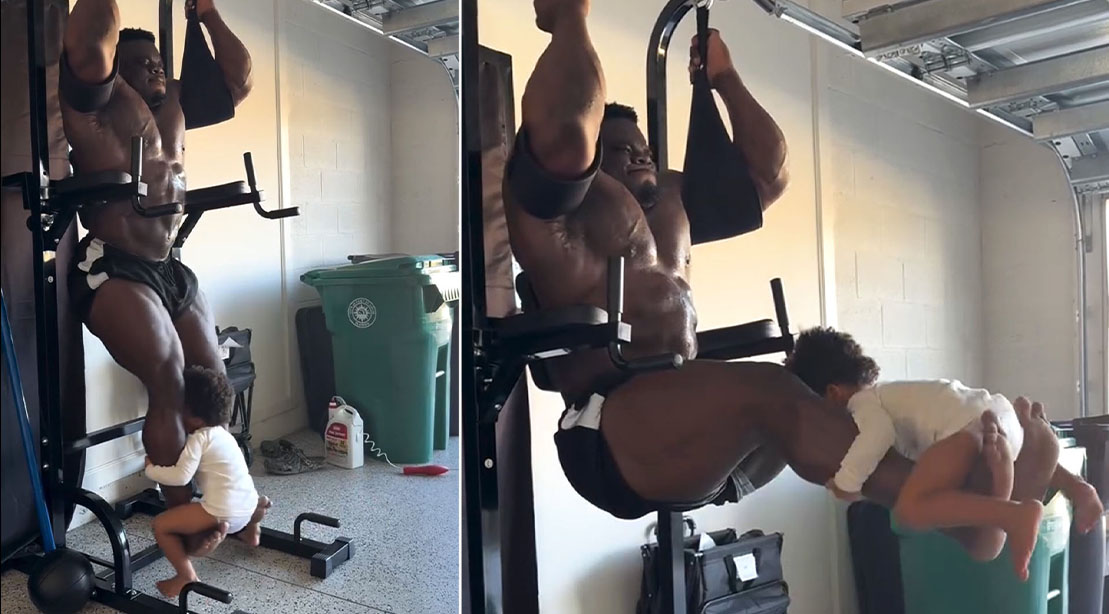Subtle mistakes in head position can sabotage gains and increase injury risk during the deadlift. Strongman competitor and coach Brian Alsruhe covered two common mistakes that hold athletes back during setup and execution.
This works like magic. It is a skill. It’s going to take some practice.
—Brian Alsruhe
- Mistake One: Craning the Neck Up
- Mistake Two: Head Too Far Forward in Setup
Mistake 1: Craning the Neck Up
Lifters instinctively raise their head and crane their neck during deadlifts, which can weaken the posterior chain and slow bar speed. (1) Alsruhe demonstrated how pervasive this problem can be via his slower bar speed while deadlifting 560 pounds with a craned neck.
Deadlifts aim to achieve maximal force quickly and slow bar speed opens the door to a host of problems. If the bar moves slowly, especially off the floor, posterior muscles like the glutes, hamstrings, and back aren’t recruited properly. (2) Form can break down, leaving athletes prone to injuries. (3)
Common signs of craning the neck could be the natural urge to look up, slower bar speed during lifts, or noticing the chin rising when filming a lift.
Mistake 2: Head Too Far Forward in Setup
Without a strong deadlift setup, strength won’t hold. Forward head position can drain power from your lockout.
A head weighs between 10 to 20 pounds. That weight needs to get behind the bar to lock out.
—Brian Alsruhe
During a deadlift session with powerlifting legend Mark Bell, Alsruhe realized his head was positioned too far forward during sets, leading to unnecessary loading and strain. (4) By using cues “chest up, chin down” and “pack the neck,” he maintained a neutral spine and head position.
Mastering head position can light up deadlift gains and transfer to other lifts. “Once you understand and apply this phenomenon, it’ll do so much for a ton of your lifts; not just your squat and deadlift. It will help your Zercher squat, front squat, and overhead press” Alsruhe concluded.
Powerlifting Content
References
- Hlavenka TM, Christner VFK, Gregory DE. Neck posture during lifting and its effect on trunk muscle activation and lumbar spine posture. Appl Ergon. 2017 Jul;62:28-33. doi: 10.1016/j.apergo.2017.02.006. Epub 2017 Feb 27. PMID: 28411737. https://pubmed.ncbi.nlm.nih.gov/28411737/
- Martín-Fuentes I, Oliva-Lozano JM, Muyor JM. Electromyographic activity in deadlift exercise and its variants. A systematic review. PLoS One. 2020 Feb 27;15(2):e0229507. doi: 10.1371/journal.pone.0229507. PMID: 32107499; PMCID: PMC7046193. https://pmc.ncbi.nlm.nih.gov/articles/PMC7046193/
- Bonilla DA, Cardozo LA, Vélez-Gutiérrez JM, Arévalo-Rodríguez A, Vargas-Molina S, Stout JR, Kreider RB, Petro JL. Exercise Selection and Common Injuries in Fitness Centers: A Systematic Integrative Review and Practical Recommendations. Int J Environ Res Public Health. 2022 Oct 5;19(19):12710. doi: 10.3390/ijerph191912710. PMID: 36232010; PMCID: PMC9565175. https://pmc.ncbi.nlm.nih.gov/articles/PMC9565175/
- Michaud F, Pérez Soto M, Lugrís U, Cuadrado J. Lower Back Injury Prevention and Sensitization of Hip Hinge with Neutral Spine Using Wearable Sensors during Lifting Exercises. Sensors (Basel). 2021 Aug 14;21(16):5487. doi: 10.3390/s21165487. PMID: 34450929; PMCID: PMC8402067. https://pubmed.ncbi.nlm.nih.gov/34450929/
Featured image: @the_swoe on Instagram










